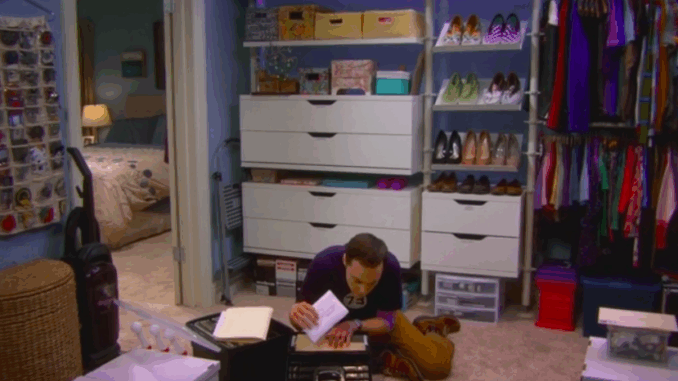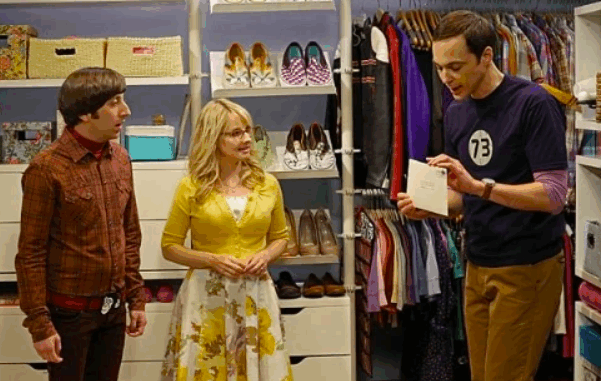
One of the most overlooked aspects of The Big Bang Theory is how the characters’ wardrobes evolved throughout the 12-season run. While the show is best known for its witty science jokes and quirky personalities, a closer look at each character’s clothing tells a surprising story of emotional maturity, changing relationships, and shifting self-perception. It turns out that what these characters wore spoke volumes—even when they weren’t saying a word.
Sheldon Cooper: From Childlike to Subtle Sophistication
In early seasons, Sheldon Cooper’s wardrobe was essentially a uniform: graphic tees layered under long-sleeve shirts, always featuring superhero logos or science jokes. It mirrored his rigid personality—everything needed to be structured, predictable, and “correct.” His shirts were loud, colorful, and juvenile, reflecting his disconnection from adult social norms.
But by the final seasons, Sheldon’s style subtly changed. The tees became less childlike. He wore more blazers, even button-downs. During his wedding to Amy, he traded in quirky comfort for a classic tuxedo—marking not just a style change, but a seismic shift in his willingness to embrace adulthood, vulnerability, and change.
Penny: From Cheesecake Factory Uniform to Corporate Chic
Penny’s wardrobe may be the clearest visual indicator of her growth. In season one, she’s all about denim skirts, tank tops, and bohemian flair—a struggling actress with dreams bigger than her budget. Her Cheesecake Factory uniform became a symbol of her stuck phase, where ambition clashed with reality.
Once she pivoted to pharmaceutical sales, her wardrobe transformed. Pencil skirts, blazers, and a more subdued color palette replaced her free-spirited early outfits. It wasn’t just about looking the part—it reflected confidence, maturity, and the acceptance that success doesn’t always look like what we imagined. By the end, Penny looked like someone comfortable in her own skin and proud of the choices she made.
Leonard Hofstadter: A Subtle Shift in Self-Respect
Leonard’s signature hoodie-under-jacket combo became iconic in its own right. In the beginning, it symbolized insecurity and a desperate need to blend in—not stand out. His layered clothing mirrored how he emotionally guarded himself, particularly in his awkward pursuit of Penny.
As his confidence grew—both in his relationship and career—his wardrobe evolved too. While he never fully abandoned his nerdy-casual style, Leonard started wearing better-fitted clothing, more button-downs, and even ditched the hoodie occasionally. It was a quiet yet powerful transformation that said: “I believe in myself now.”
Raj Koothrappali: Fashion as a Mask (And a Mirror) 
Raj always had the most flamboyant and colorful wardrobe—think sweater vests, patterned shirts, bright pants, and scarves. In many ways, his fashion sense was ahead of his character development. He dressed confidently, even when he wasn’t emotionally there yet.
As the seasons progressed and Raj began to confront his fear of loneliness, his clothing choices also evolved. He still retained his colorful flair, but there was more structure, more maturity in how he presented himself. His fashion stopped being a distraction or a cover—it became a true expression of who he was: artistic, sensitive, and yes, still nerdy.
Amy Farrah Fowler: The Most Striking Transformation
When Amy first appeared, her wardrobe was as rigid and socially disconnected as her personality—ill-fitting cardigans, long skirts, and drab colors. It matched her initial robotic demeanor and emotional walls.
But Amy’s transformation was arguably the most dramatic. As her friendship with Penny and Bernadette blossomed and her relationship with Sheldon deepened, her clothes changed too. The cardigans remained, but she introduced softer fabrics, floral patterns, and better fits. By the time of her wedding, Amy wore a beautifully unconventional gown that still stayed true to her quirky essence but signified the full evolution of a woman embracing love and acceptance.
Bernadette Rostenkowski: Subtle Power Dressing
Bernadette’s voice might have been small, but her wardrobe was bold. Early on, she wore lots of pastels and cutesy dresses, mirroring her sweet first impressions. But as she asserted herself—both in her relationship and as a powerful microbiologist—her style grew more confident.
She began to wear darker tones, sleeker fits, and even incorporated more professional power-dressing while still keeping her signature flair. Bernadette didn’t change who she was—she just learned how to amplify it.
Why It All Matters
TV wardrobes are often designed to be iconic, but in The Big Bang Theory, they were quietly functional. They didn’t just help identify characters—they showed us who these people were becoming. Costume designer Mary T. Quigley once said that the goal was to show “growth without losing the heart of the character.” Mission accomplished.
We watched these characters go from socially awkward misfits to self-aware, emotionally intelligent adults—and their wardrobes came along for the ride.
Final Thoughts: A Style Story Worth Noticing
In a show dominated by brilliant minds and quirky jokes, it’s easy to miss the quieter storytelling happening in the background. But the next time you rewatch The Big Bang Theory, pay attention to the clothes. Because sometimes, a blazer, a scarf, or a new haircut says more than a punchline ever could.
